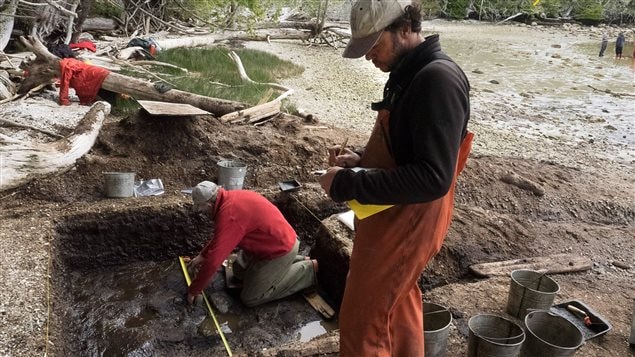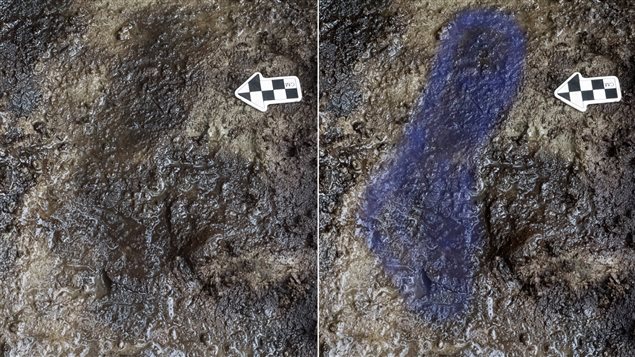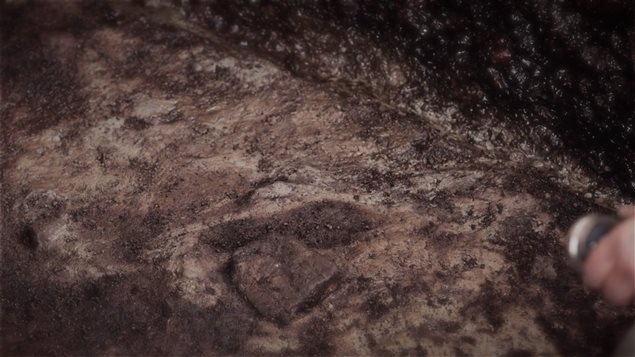Ancient footprints, possibly prehistoric, found on British Columbia tidal beach.
Researchers on an island off Canada’s west coast are exited about a find deep in the sand of a remote beach.
David Fedje, an archaeologist at the Hakai Institute and the University of Victoria, had found what appeared to be an ancient midden along a stretch of beach on Calvert Island in 2014.

Returning this year with Duncan McLaren, a fellow Hakai Institute and University of Victoria archaeologist, they dug down through the layers hoping to find bits of ancient stone tools to confirm occupation.
But when the reached the clay layer in the test pit, they found a strange impression of a black shape in the grey clay. However with time running out, they filled in the pit and had to leave.

13,200 years old?
This year they returned with a small team and after three days of careful digging, found not one, but several impressions which were clearly human footprints.
Carbon dating of charcoal in the first footprint was dated to over 13,000 years ago, meaning the site may have been occupied shortly after the last ice age.
However, other evidence indicates the prints may be only 2000 years old.
They are now trying to narrow down the chronology. If the prints do turn out to be over 13,000 years old, they would be the oldest in North America, and not much younger than the oldest human footprints in the “New World”, found in Chile dated to be over 14,000 years old.
According to Martin Lockley, director of the Dinosaur Trackers Research Group at the University of Colorado, and a leading authority on fossil human footprints, ancient impressions of human feet are rare, occurring at just 65 localities in the world. Quoted in a June 22 article by Heather Pringle in Hakai magazine, he says, “We have thousands of dinosaur footprint sites, hundreds of bird and mammal footprint sites, but for humans, we are still looking at just a few dozen.”

The group found twelve footprints which appear to be that of a man woman and child. They speculate that when the footprints were made, black sand and tiny gravel filled in the indentations and preserved them in the excavated area of only about four square metres.
One set of prints heads our of the excavated area, leading the archaeologists to believe there are many more prints waiting to be found.
The researchers discovered the site by analyzing sea level changes. After the last ice age, levels rose over 100 metres, drowning many ancient coastal sites. But uplifting of the earth’s crust around Hakai Passage and Calvert Island almost equalled the amount of sea-rise. Almost, but not quite, as the tides each day cover the site to a depth of a couple of metres. In 2014 they wrote a paper on this phenomenon in Quaternary Science Reviews
Digging at these sites has to coincide with the tides, or by erecting barriers to keep the sea out as they dig.
McLaren notes that the footprints add an exciting and awe-inspiring human side to the work, often missing often digging up ancient stone tools and bones.
With files from H Pringle-Hakai Magazine







For reasons beyond our control, and for an undetermined period of time, our comment section is now closed. However, our social networks remain open to your contributions.